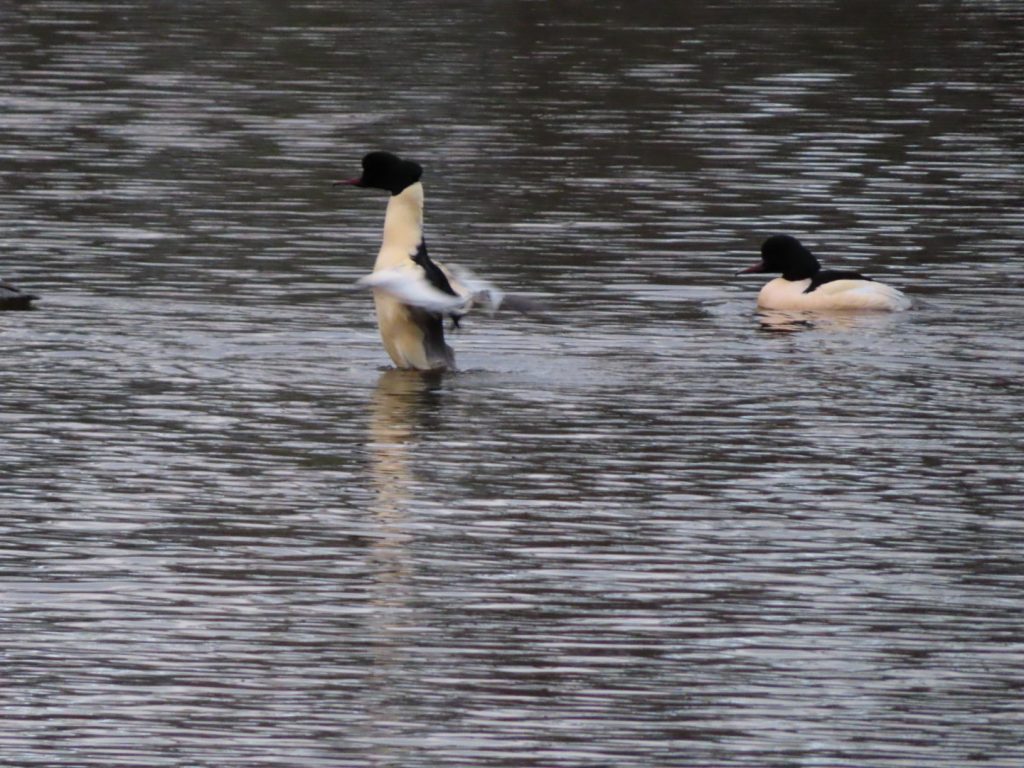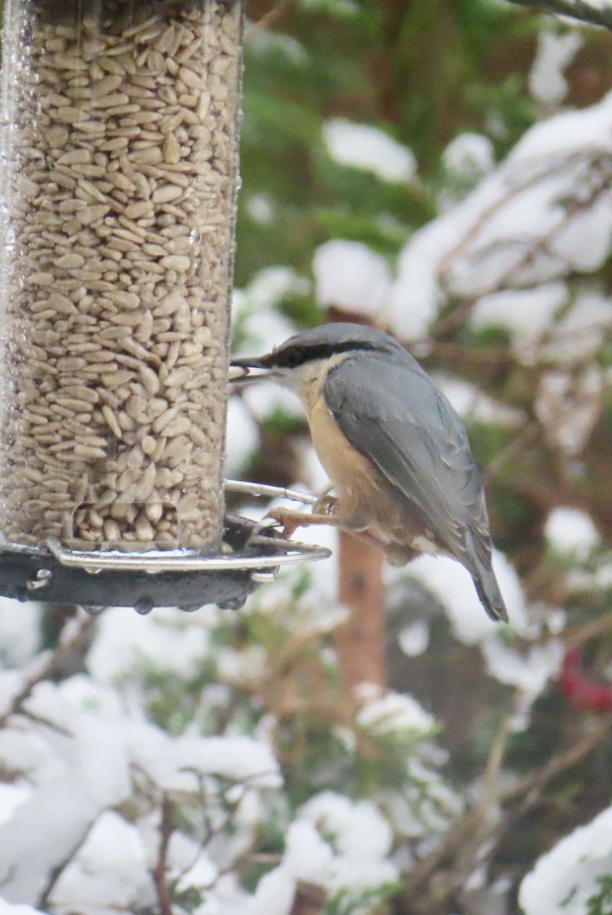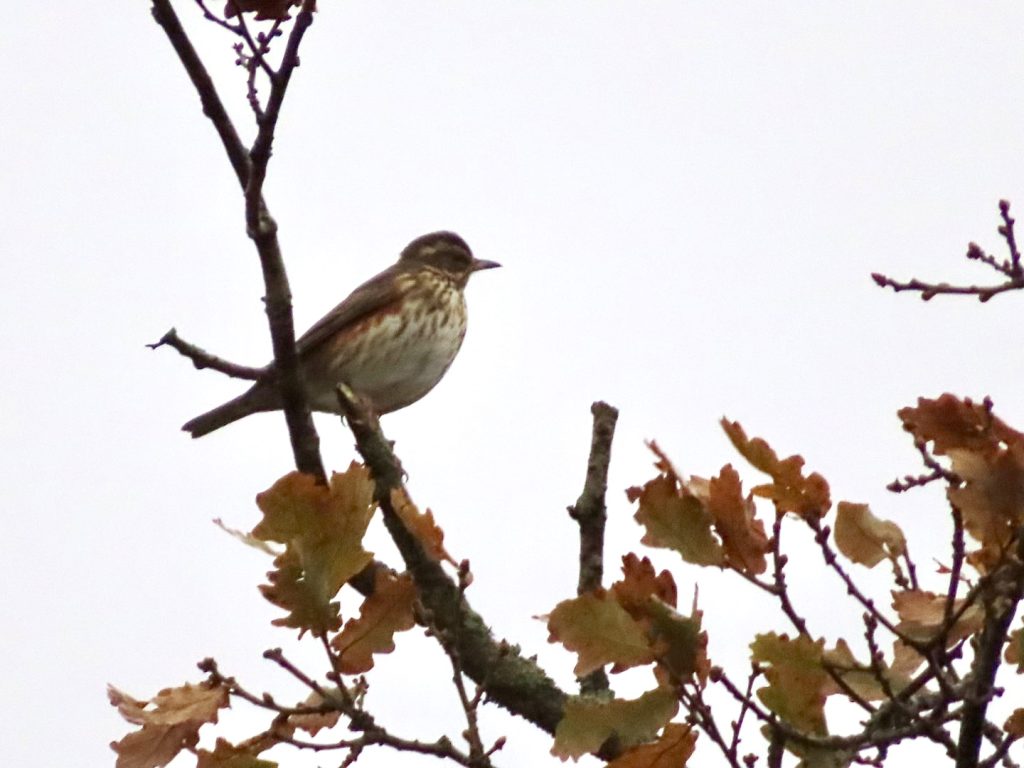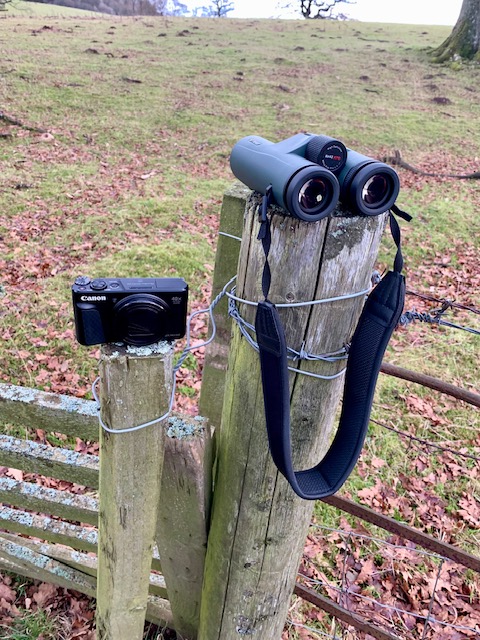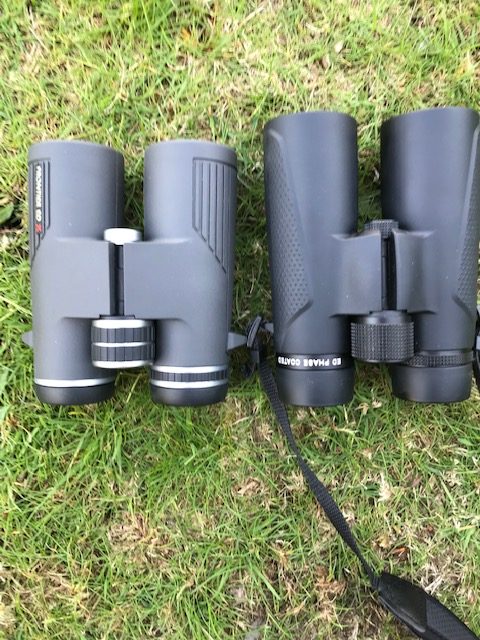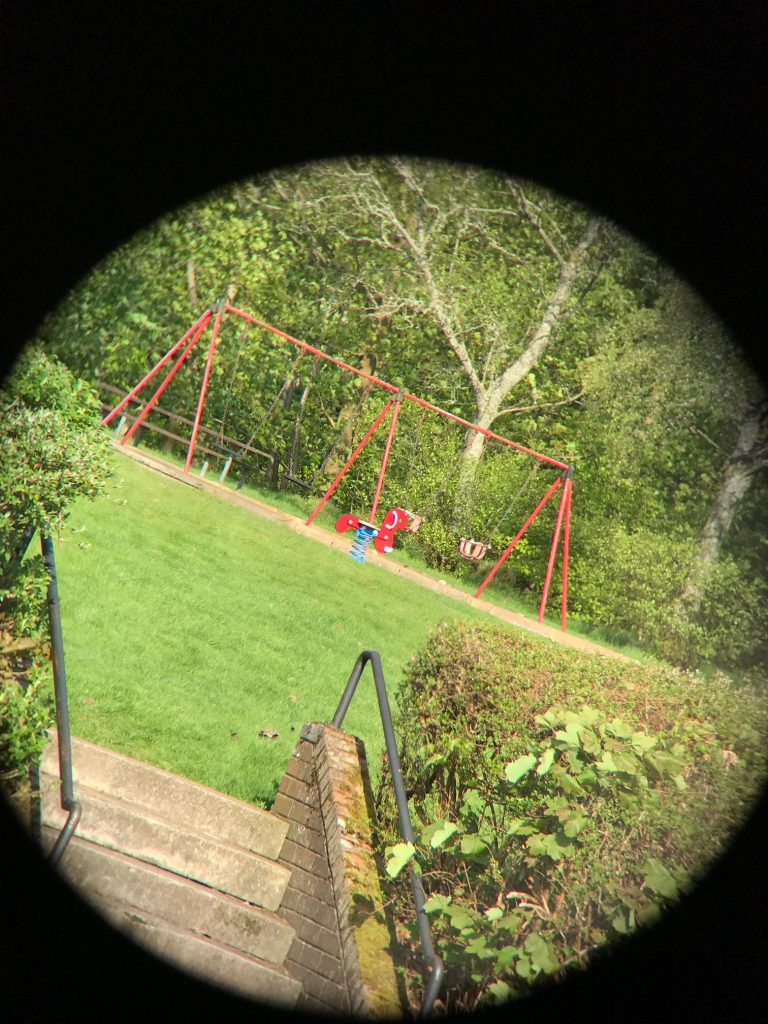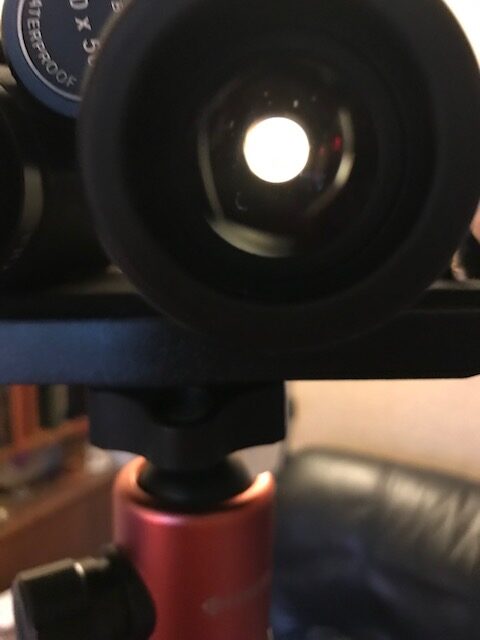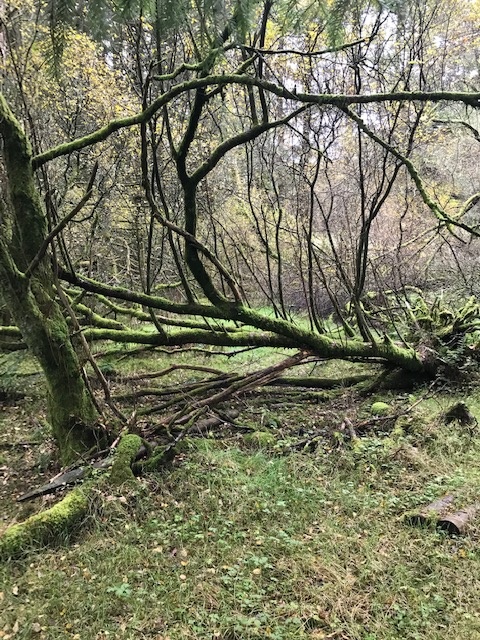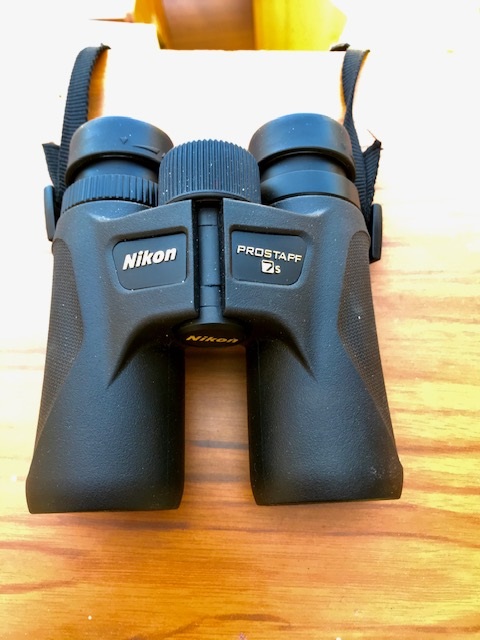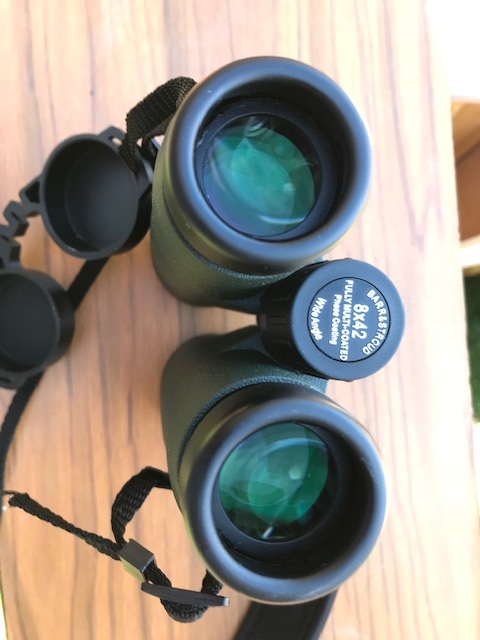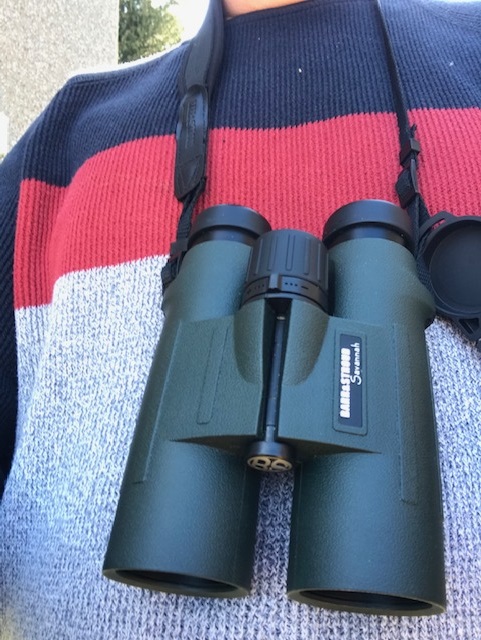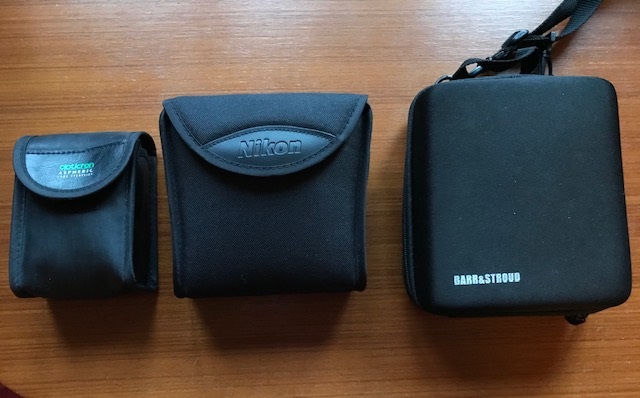
Two mid-priced 8 x 32 binoculars compared: the Celestron Trailseeker(left) and the Helios LightWing HR( right).
The march of technology continues apace and never ceases to amaze me. This is especially true when it comes to telescope and binocular optics. You can now buy very decent optics at budget prices that display a level of quality we could only dream of a couple of decades ago. And technologies that were only available on premium optics up to fairly recently are now being offered by companies offering much more economical packages to sate the requirements of the masses.
That’s exactly how I feel about my recent foray into binocular testing. Advances in coating technology, in particular, has allowed many new optical firms to offer products that are edging ever closer to the performance levels only available on premium models until recently. Even entry-level roof prism binoculars feature decent anti-reflection coatings on all optical surfaces(which can be as many as 30 in a good roof prism binocular), as well as phase correction technology that significantly increase contrast, accurate colour rendition and image brightness. These less expensive models used either aluminium or silver coatings to boost light transmissions to as high as 80 to 85 per cent, but one can now obtain very economically priced models that also feature super-high reflectivity, broadband dielectric coatings that have increased light transmission to above 90 per cent, in touching distance of the most expensive, premium binoculars money can buy.
Unfortunately, many amateurs who enjoy using quality binoculars mistakenly conflate high-level optical performance with the introduction of extra low dispersion (ED) glass, but the truth is that such an addition contributes little to the quality of the optical experience. Much more significant is the use of higher quality coatings that significantly increase both the brightness and contrast of the images, which in turn enables one to see those finer details, thereby boosting resolution(perhaps this is why the Helios has HR in its name?). Of course, many(but not all) premium binocular manufacturers use a combination of ED glass elements and the finest dielectric coatings, making it all the more difficult for the user to assess the relative importance of either component. But I was able to explore and confirm the dramatic effects of the latter by putting a couple of mid-priced 8 x 32 compact roof prism binoculars through their paces; a Helios LightWing HR and a Celestron Trailseeker(both pictured above), both of which feature premium quality dielctric coatings on the prism surfaces as well as high-quality broadband anti-reflection coatings on the multiple lenses and prisms used in their construction. Neither instrument contains ED glass elements however. For more on this, check out this short youtube presentation by an experienced glasser and binocular salesman describing one of the models I will be evaluating in this blog(the Helios LightWing), and who formed the same conclusions as this author.
Both instruments were acquired from the same source, Tring Astronomy Centre. Their friendly and knowledgeable staff have offered exceptional service with a number of past purchases and I had thus no hesitation approaching them again for the acquisition of these 8 x 32 compact binocular models.
The first model I acquired was the Helios LightWing HR 8 x 32, which set me back £127 plus £5 to ensure an expedited delivery of the package within 24 hours of ordering. As soon as it arrived, I inspected the contents, which included the binocular with a rain guard, soft carry case, a lens cloth and generic(read single page instruction sheet) and padded neck strap. Within minutes of its arrival, I had the binocular out of its case to perform my iphone torch test in my living room to see how well an intense beam of white light behaved as it passed through the instrument. As I outlined in a few previous blogs, such a test is extraordinarily sensitive, showing up even the slightest stray reflections in the field of view and revealing how well the optical components suppressed the tendency of the light to diffuse across the field, reducing contrast as it does. Well, to my great relief, the result was excellent! Despite the torch being set at its highest setting in a darkened room, the Helios LightWing HR showed only the feeblest level of ghosting on axis. What is more, there was no difraction spikes or diffused light in the field! The image was exceptionally clean. Indeed, comparing the result to my control binocular, a Barr & Stroud Savannah 8 x 42, which also exhibits exceptional stray light control, the Helios was providing even better results!
To put this in some additional context, the torchlight test result for the Helios 8 x 32 was better than my Zeiss Terra ED 8 x 25 pocket binocular and a Swarovski EL Range 10 x 42, as I recall from my notes!
I now had a new standard by which to measure all other binoculars!
The same was also true when I placed the light beam just outside the field of view. Only a very minimal amount of glare was seen in the field.

The Helios LightWing HR 8x 32 revealed exceptional control of stray light and annoying internal reflections.
Wow!
This told me that the binocular ought to produce very high contrast images in even the most demanding conditions, either by day, glassing in strongly backlit scenes, or at night, when looking at bright light sources, such as artificial street lighting or a bright Moon. No doubt, this is attributed to a variety of factors including excellent multi-layer coatings on all optical surfaces, as well as a sound knowledge of how to adequately baffle the instrument.
………………………………………………………………………………………………………………………………
Note to the reader: My pet peeve is seeing excessive glare and strong ghosting from internal reflections in a binocular image. Indeed, I am quite intolerant of it! Moreover, I usually dismiss any reviews that do not test for this phenomenon. Unfortunately, that also entails taking the majority of user reviews I read online with a large dose of salt!
………………………………………………………………………………………………………………………………..
Examining the Helios, I noted the unusual colour cast of the anti-reflection coatings on both the objective and ocular lenses. They seemed to be immaculately applied! I also noted how the objectives were recessed very deeply; with ~ 10mm of overhang. This is a very good(and often overlooked!) design feature, as it cuts down on peripheral glare during bright daylight observations and also affords considerable protection from dust and rain.

The unusual colour cast of the anti-reflection coatings of the Helios LightWing objective lenses.
Mechanical assessment: The Helios is very well constructed. The chassis is fabricated from a magnesium alloy which combines light weight(500g) with good mechanical strength. This is an unsual offering in such a low-cost instrument, with cheaper polycarbonate or even ABS plastic being the rule rather than the exception on models offered at this price point. The central hinge had enough tension to maintain my particular IPD but I would have liked it to be just a little bit stiffer(just like my wonderful Barr & Stroud Savannah 8 x 42). I found handling the binocular to be unusually tricky, as the rubber eyes needed to attach the neckstrap protrude from the barrels a little too much, making it rather more awkward to get the binocular comfortably placed in my hands while observing.
The focus wheel is very large in relation to the overall size of the instrument. Indeed, I thought it was a little too large! Although I could get a good grip, rotating it showed that it was somewhat clunky and offered unusual resistance to movement. In contrast, the dioptre ring moved with silky smoothness, and you can actually see the right ocular field lens moving as you rotate it!

The buttery smooth right-barrel dioptre ring is a joy to adjust.
The eyecups are rather stiff but do extend upwards with two clickstops. With an eye relief of 15.6mm, eyeglass wearers will find it difficult to image the entire field. Fortunately for me though, this wasn’t a problem, as I don’t wear eye glasses while glassing. The cups are made from quality metal covered by a soft rubber-like material. They are very firm and hold their positions securely even when undue pressure is applied to them. Overall, a very nice touch!
The chassis is covered by a rather thin rubberised skin, which was somewhat thinner than I’ve seen on a variety of other binoculars I’ve sampled. As a result, it has slightly less friction while man handling, which can prove important, especially if used for prolonged periods in the field. It also means that it would wear down that little bit faster after extended use.
The Helios can be attached to a tripod or monopod for increased stability via the built-in bush located between the barrels, toward the front of the instrument.
Optical daylight testing: Scanning some autumn leaves in my back garden confirmed what I had witnessed in the torchlight test. The image was very bright and tack sharp with wonderful contrast and colour fidelity. There was nary a trace of chromatic aberration( which continues to affirm my belief that ED glass is unnecessary: -a marketing gimmick? – for such small, low power binoculars). However, this was only true in the central 50 per cent of the field. The outer part of the field became progressively softer with the edge being out of focus. Examining a telephone pole about 25 yards in the distance unveiled very strong field curvature as it was moved from the centre to the edge of the field of view.
I hit another snag when I attempted to image the Fintry hills about a mile in the distance. The focus wheel was racked to the end of its natural focus travel but I still could not quite reach a sharp focus. Adjusting the dioptre ring on the right barrel allowed me to just get there but the left barrel was still not sharply focused. After dark, I did a test on the bright star Vega, which unfortunately confirmed my daylight tests. Although I could achieve pinpoint sharp images in the right barrel, the left barrel showed that the star was badly bloated. Another test on the Moon showed the same thing. The right barrel gave a razor sharp image with exceptional contrast and no internal reflections or diffused light around it, but the image at the edge was badly out of focus.
The whole experience left me somewhat bewildered. Why expend so much effort into applying state-of-the art coatings into a binocular with nice mechanical features, only to see excessive field curvature in the outer part of the field? It just didn’t make sense! I mean, Helios could have made the field a little smaller(it has a true field of 7.8 degrees) with sharper edge definition and I would have been happy. In reallity you see, I had been spoiled by the nearly flat fields presented by my Barr & Stroud Savannah 8 x 42(and over a larger field to boot- 8.2 degrees), as well as those presented by my Zeiss Terra pocket and my other models with aspherical ocular lenses. Needless to say I was disappointed and decided to contact the staff at Tring the same evening, explaining my findings.
Next morning, they contacted me, apologising for the defective optic, as well as suggesting that I could have a replacement Helios LightWing, or try a Celestron Trailseeker 8 x 32, which apparently had very similar specifications to the former. Now, I had a bad experience with an 8 x 25 Celestron Nature DX(an entry-level roof prism binocular) which showed far too much glare and internal reflections for my liking. But I had a good look at the specifications on the Celestron Trailseeker models, which were recently discounted by 20 per cent and were now being offered at the same price as I had paid for the Helios LightWing. After some deliberation, I decided to accept their offer of trying the Trailseeker. And to their credit, Tring shipped out the binocular, together with a return label for the Helios, the same day, and I received it less than 24 hours later!
How about that for customer service!

The Celestron Trailseeker 8 x 32 package.
With some trepidation, I opened the package and inspected its contents. First impressions looked good. I received the binocular, a much higher quality carry case, a binocular harness, tethered rubber objective caps and rain guard, a decent quality padded neck strap, a lens cleaning cloth and a comprehensive instruction manual dedicated to the Trailseeker line of binoculars( in five languages).
The Trailseeker binocular specifications looked very similar to the Helios, which included the application of premium-quality phase and dielectric coatings, a 7.8 degree field (136m @1000m), Bak-4 prisms, o-ring sealed, dry nitrogen purged, making it fog proof and water proof(though to what extent was not revealed). And just like the Helios, the Trailseeker can be mounted on a tripod or monopod.
As with the Helios, the Trailseeker has very deeply recessed objectives (again about 10mm) but the anti-reflection coatings looked different in daylight;

The Trailseeker also has deeply recessed objective lenses but the coatings appeared different.
Just like the Helios, the Celestron Trailseeker has a rugged magnesium alloy chassis but the focus wheel is significantly smaller. Weighing in at just 450g, it is 50g less bulky than the Helios. The Trailseeker build quality is excellent; rugged, much easier to handle than the Helios and overall having better ergonomics. The tough, rubberised covering has better grip than the Helios too, and small thumb indentations on the belly of the instrument makes it that little bit more comfortable to hold in the hand.

Nicely placed thumb indents on the underside of the Trailseeker make handling that little bit more intuitive.
Well, you can guess what I did next; yep, I set up my iphone torch, turned it up to its brightest setting and placed it in the corner of my living room with the curtains pulled to cut off much of the daylight. With a good close focus of about 6.5 feet, eagerly I aimed the Trailseeker binocular at the light and examined the image.
Drum roll……………………………………….
An excellent result! Internal reflections were minimal, diffused glare was all but absent and diffraction spikes were very subdued. Comparing the Trailseeker to my Barr & Stroud Savannah 8x 42 control binocular showed that it was on par with it. What a relief! To be honest, I had some reservations about the Celestron, owing to my unfavourable experience with the cheaper Nature DX model, and so I half expected that they might skimp on this important process. But no, they did a very good job! So far, so very good!
I was also impressed with the mechanical attributes of the Trailseeker, which is difficult to ascertain vicariously without man handling it. Though quite conservative in design, the eyecups are of high quality(metal over rubber) but have a nice feel about them. They twist up much more easily than those on the Helios and have two settings. Like the Helios, the eye relief is pretty tight(15.6mm) for eye glass wearers but is plenty good enough for those who observe without glasses.They do not budge even when considerable force is applied to them. I would rate their quality as very high, so much so that I don’t think I will have much in the way of problems with them going forward.

The metal-over rubber eyecups of the Celestron Trailseeker are a good step up from the Nature DX models and feel very secure while glassing.
The focus wheel has a ‘plasticky’ feel about it but unlike the Helios, infinity focus does not lie at the extreme end of the focus travel. This is actually useful for ‘focusing out’ some of the aberrations at the extreme edge of the field. Unlike other user reviews of the Trailseeker, the focus wheel on the unit I received was quite stiff to operate out of the box but this will surely loosen up with more use. Rotating the focuser both clockwise and anti-clockwise revealed little or no backlash or bumpy spots that you often encounter on cheaper binoculars. Some users balk at the idea of using a plastic focuser but I cannot for the life of me understand why it would make much difference. I mean, if it works, it works! What’s to give?

The focus wheel on the Trailseeker is nothing out of the ordinary but does work well in field use.
The dioptre ring is located under the right eyecup. It rotates smoothly with just the right amount of friction.
Optical daylight testing: As I’ve illustrated above, good mechanical design and great control of stray light don’t count for much if the images don’t deliver. So I was eager to see how the Celestron Trailseeker behaved when looking ’round the landscape. Accordingly, I examined the same autumn leaves in my back garden set a few tens of yards away. This time, the results were very much more encouraging! The leaves focused beautifully, throwing up excellent brightness, contrast and sharpness with a much wider sweet spot than in the Helios, which I estimated to be about 70 per cent of the field. I could immediately tell that there was much less field curvature in this binocular than in the Helios, allowing me to sharpen up the edge of field definition with only minor tweaking of the focus. This much reduced field curvature was also apparent when I examined the same telephone poll I observed with the Helios. Instead of the strong off-axis distortions I encountered with that instrument, as the pole was moved from the centre to the periphery of the field, the Trailseeker proved much more forgiving.
What a relief!
Having said all of this, there was more off-axis field curvature in the Trailseeker than in my Barr & Stroud Savannah 8 x 42, which, in comparison, throws up a wider and flatter field nearly all the way to the edge. As I’ve said many times before, the Savannah is a phenomenal operator given its very modest price tag. Perhaps some of the drooling gayponauts reading this blog right now could get off their fat backsides and confirm it!
Nah, probably too much to ask!

The Barr & Stroud Savannah 8 x 42 wide-angle binocular; an existential threat to the hubris of thieving gayponauts.
Nightime testing:
After dark, the Trailseeker delivered excellent results on artificial street lights, just as my torchlight tests reliably anticipated. There was no annoying glare, internal reflections and the diffraction spikes were small and very subdued. Turning the instrument on a low Moon skirting the horizon showed wonderful sharpness on axis, with well above average contrast. And when I placed the Moon at the edge of the field, it remained quite sharp, though visibly softened by a small amount of field curvature. Needless to say, it was in a completely different league to the Helios in this regard!
Later in the night, with the Moon having set, I examined the appearance of the large and sprawling Alpha Persei Association located nearly overhead at the time. This provided an excellent test of how its many bright stellar members would behave from the centre of the binocular field to the field stop. To my relief, the stars remained acceptably small and sharp across the entire field, with the stars at the edge of the field requiring only a small tweak in focus to improve their definition. They did not balloon to stupidly large sizes like I observed in the Helios.
Turning the binocular on the Hyades in Taurus gave very pleasing results too. Contrast was excellent with its many colourful stellar components remaining acceptably small and crisp even at the edges of the field.
I considered these results to be very acceptable. This is one small binocular that can be used profitably for nightime observations!
A Walk in the Countryside with the Celestron Trailseeker 8 x 32
Although the Celestron Trailseeker 8 x 32 is a small, high-quality and lightweight instrument, it is not readily pocketable, unless you have a coat that has rather large and deep receptacles. Having tried a few 8 x 32 binoculars, I personally find them a little awkward to use in comparison to my two favourite pocket binoculars like my Opticron Aspheric LE and my Zeiss Terra(both of which are 8 x 25 formats) or a larger instrument such as my 8 x 42. I just find the 8 x 32 format a bit kludgy in my rather small hands. That said, the 8 x 32 seems to be a popular choice for birders and other nature enthusiasts, who tire of schlepping around a larger instrument for hours on end. In good light, there’s no real advantage in using a larger format binocular and so I tend to use my pocket binos most often. But if you are observing in low light conditions, such as a dull, overcast winter day, late in the evening or early in the morning, the 8 x 32 would definitely be a better choice. I have verified this wisdom by comparing the views through my 8 x 25 Terra and the 8 x 32 Trailseeker at dusk, where the brighter images served up by the latter are plainly in evidence. And because you have a relative abundance of good quality light to play with, you can see more details in the image. Shimples!

Choosing a small binocular is a deeply personal choice that you can only decide on after trying them in the field.
The consensus view is that larger binoculars are more comfortable to use since their larger ocular lenses make it easier to place your eyes in the correct position to see and immerse yourself in the field of view. I believe there is definitely some truth in this, but in the end it’s really about what you get used to. I personally have no trouble lining up my eyes with the smaller eye lenses on my pocket binos, so I never see this as being much of an issue.

Enjoying the rich colours of autumn on a hill walk overlooking Fintry.
All that having been said, the Trailseeker 8 x 32 is a very handy companion on my daily two-mile ramble ’round Culcreuch Castle Estate, which has some extensive wooded areas, a fast-flowing river, numerous small brooks, open fields which extend towards the surrounding hills and a small pond, where I enjoy watching the antics of a variety of water-loving avian species. The field of view is very generous at 7.8 degrees, which is quite large as most 8 x 32 binoculars go, though some models sport still larger fields in excess of 8( ~ >140m@1000m) angular degrees. The razor sharp optics on the Trailseeker has given me many wonderful views of golden autumn leaves glistening in weak November sunshine. I especially love to stand under a tree and glass the branches above me, focusing in on their wondrously complex contours. The low autumn Sun this time of year illumines the trunks of the trees in the wooded areas around the estate, highlighting the wonderful texture of the tree bark and the play of light upon the lichens and mosses that live symbiotically with it.
If time is not against me, sometimes I like to stop and focus in on a stretch of water flowing from the numerous small streams that feed into the Endrick, imaging the contours of rocks laden with fallen leaves and closing in on the foamy organic bubbles that swarm along the fast-flowing stretches. And when the Sun shines on the water, I can feast my eyes on the beautiful and intense reflections emanating from its surface. This is where glare control is paramount, as even a small amount of light leakage can ruin an otherwise compelling binocular scene.
Binoculars have come a very long way since their founding days. I find it amazing that one can acquire quality optics and durable mechanics like this at such keen prices. The Celestron Trailseeker 8 x 32 has been a very pleasant surprise, combining wonderful ergonomics with state-of-the-art optical science. I think a lot of people will enjoy it. And now that its price has come down significantly, this is a good time to grab yourself a real bargain and enjoy the wonders of nature up close and deeply personal.
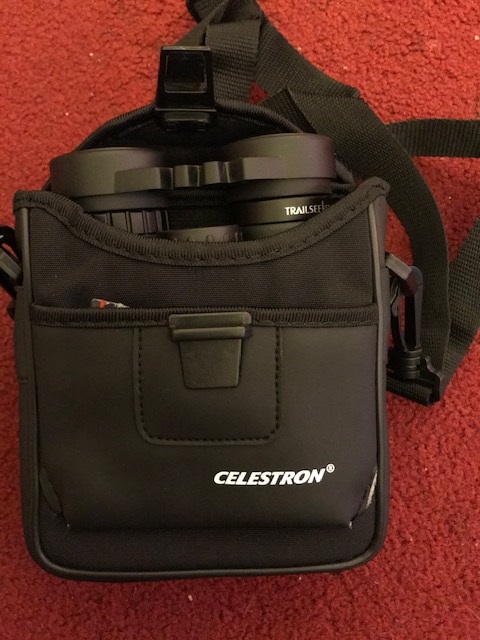
Just in case……………..
Thanks for reading!
Neil English has fallen in love with what binoculars have revealed to him, and is seriously thinking of compiling a larger portfolio of binocular experiences for a future book-length treatise on their various applications.
De Fideli.














